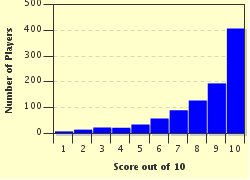Quiz Answer Key and Fun Facts
1. The nation known today as Croatia has historically been a number of regions that have changed hands among many great empires of Europe. Which of these is not a historical Croatian region?
2. Croatia's history stretches back to ancient times, and the architecture of the Classical era is still apparent on its landscape. What Roman emperor's palace still marks the center of Split, Croatia?
3. In the seventh century CE, Croatia's Roman civilization came under attack by migrants from the north, usually called "barbarians" after the term for non-Greeks. Which of these groups of "barbarian" invaders forms the dominant ethnicity of Croatia today?
4. In the twelfth century, most of Croatia came under the domination of a major Central European power; this condition would persist, with some important modifications, until World War I. What kingdom (and its successors) ruled Croatia for this eight-century span?
5. For most of the twentieth century, Croatia was part of a larger country called Yugoslavia. What are the approximate dates of Croatia's Yugoslav period (including all previous names of that federation)?
6. During most of World War II, Croatia's official government was dominated by the Ustashe, a fascist organization aligned with Nazi Germany. Who was the leader of Croatia's Ustashe?
7. The major resistance leader against the fascist Ustashe, this Croatian-born communist partisan emerged from World War II as the unquestioned leader of Yugoslavia. He would lead the country from 1945 until his death in 1980. Who was this man?
8. Which of the following best describes the circumstances of Croatia's independence from Yugoslavia?
9. After independence, Croatia took its place in the 'New Europe' of economic possibilities. Which of the following was NOT true of Croatia's economy in the beginning years of the twenty-first century?
10. Most countries are proud of their athletic champions, and Croatia is no exception. Which of these major sports figures does NOT hail from Croatia?
Source: Author
stuthehistoryguy
This quiz was reviewed by FunTrivia editor
bloomsby before going online.
Any errors found in FunTrivia content are routinely corrected through our feedback system.


